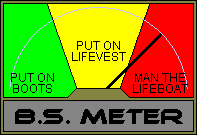Eric Johnson said:You're missing the big point, cast.
Nobody said wood subjected to rain dries faster. We're saying it's basically an inconsequential piece of the puzzle. Once your wood has dried, a little rain, or even a good soaking, has no long-lasting detrimental effect.
Getting your wood to dry correctly in the first place is the main objective. And if you just throw a tarp over the top and thus restrict the vertical airflow (chimney effect), it will not dry as quickly as if you had left it exposed to the elements.
Do you agree with that?
As a practical matter, most people trying to dry wood will do just that. And as a result, they would be better off not covering it at all.
So you're technically right. But in practice most people are going to botch the job, and then they're going to blame you when they're trying to burn sizzling wood this winter. Do you really want that on your conscience?
Agree however, many years ago (before I covered the wood) I can remember going to the uncovered wood pile and it had just rained and I had no choice but to take top layers of wood becuase many layers were wet and it was hard to get to the dry stuff and the wet wood sizzled on the grate.....so...even though only a thin outer layer of the wood was wet, it was enough to make for poor burning......that's why I'd rather cover it with something, anything, (even a tarp) as opposed to nothing at all......that way, even the top layer is dry and will burn pretty good.....



 My wife said the same thing about the frog. Actually, it's an image I lifted somewhere off of the net. It's supposed to be a fire dude but for some reason, it didn't turn out so well. I'm fairly new to this forum stuff and avatars and all so maybe I'm doing it wrong. It's a .jpg image that I condensed down to required size so who knows??? I may just keep it though because I find the burning frog thing that you and my wife see pretty darn funny.
My wife said the same thing about the frog. Actually, it's an image I lifted somewhere off of the net. It's supposed to be a fire dude but for some reason, it didn't turn out so well. I'm fairly new to this forum stuff and avatars and all so maybe I'm doing it wrong. It's a .jpg image that I condensed down to required size so who knows??? I may just keep it though because I find the burning frog thing that you and my wife see pretty darn funny.

